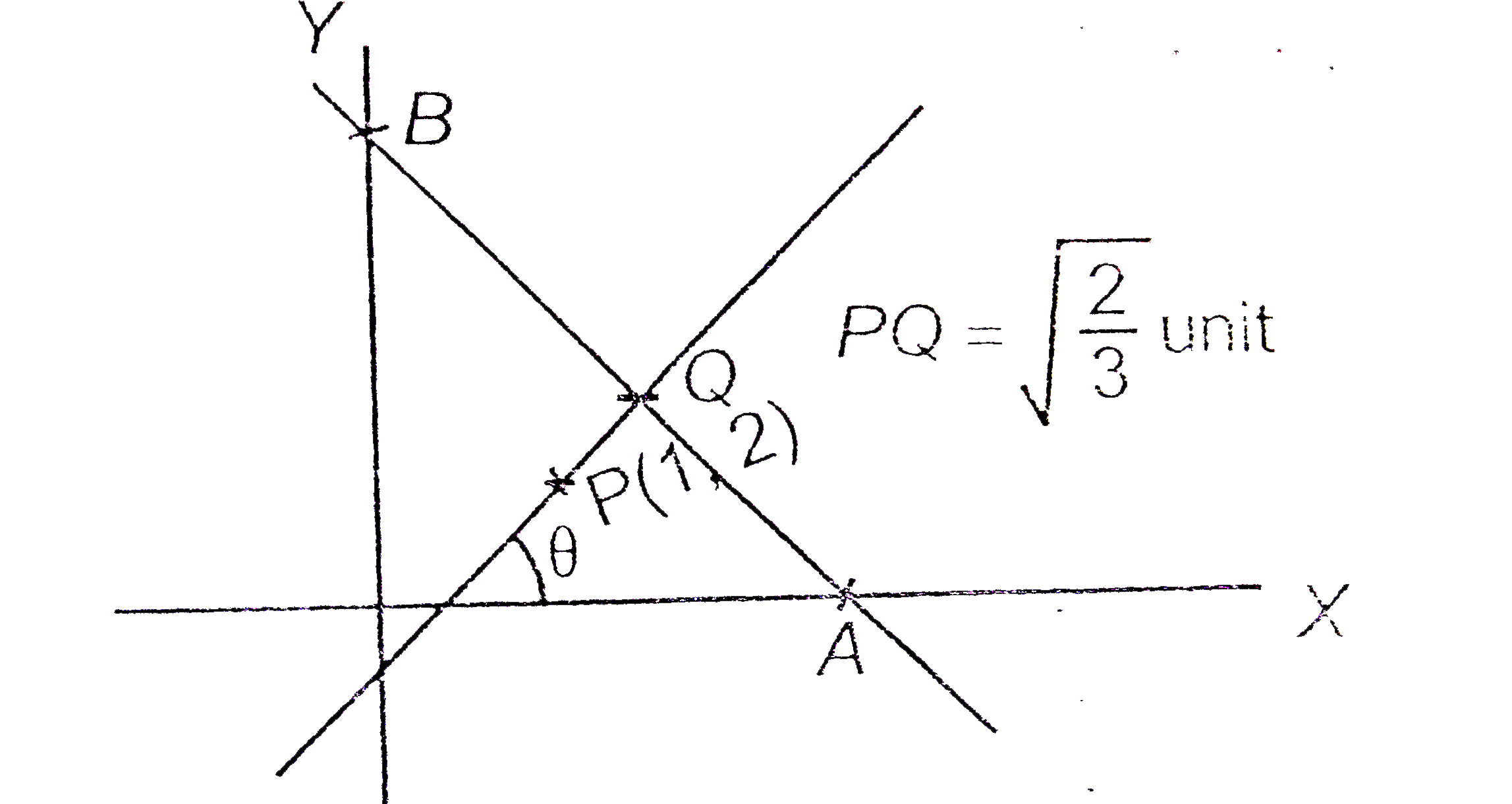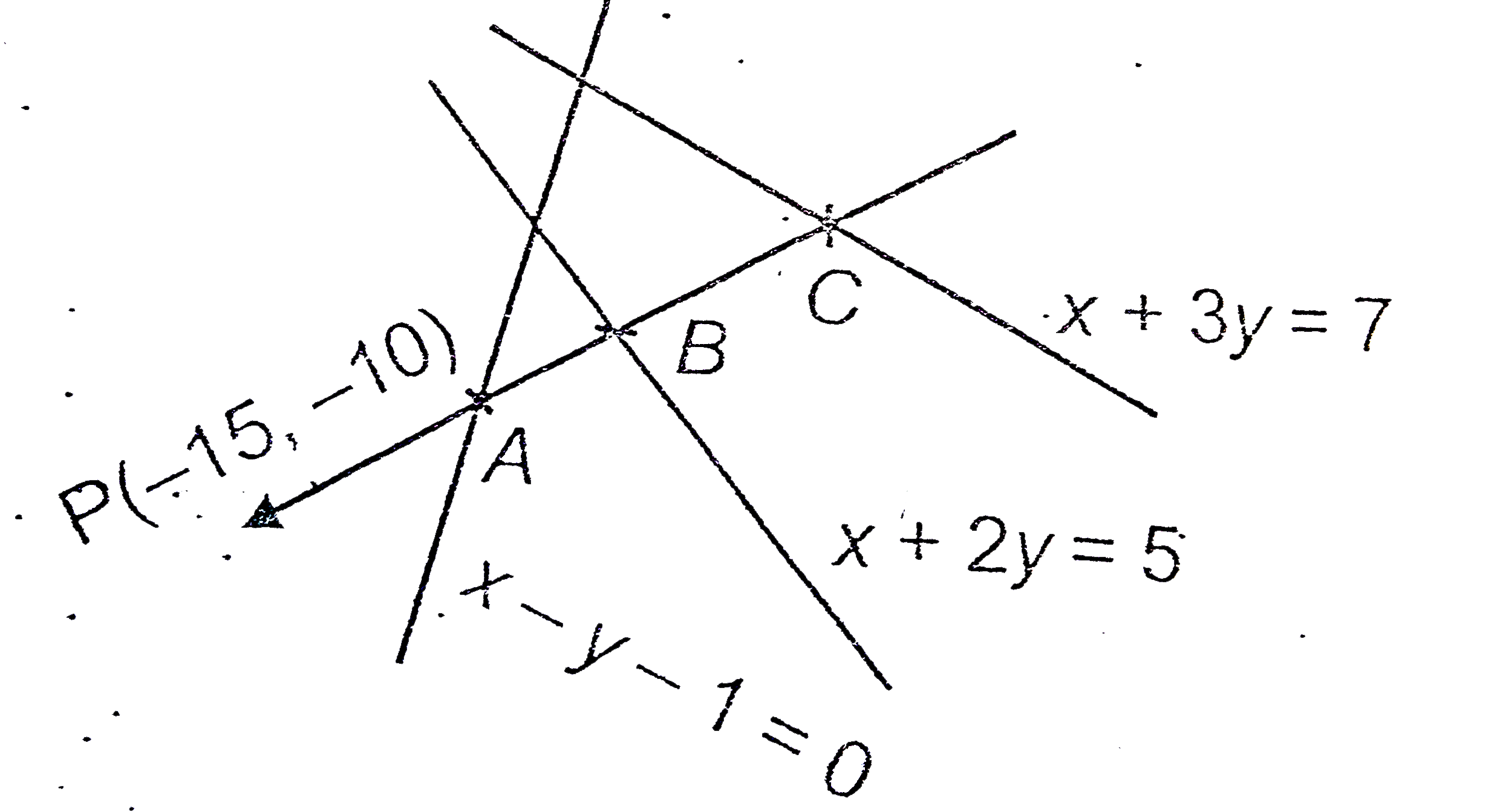InterviewSolution
Saved Bookmarks
| 1. |
(i) Find the direction in which a straight line must be drawn torough the points (1,2) so that its point of intersection with the line x+y=4 may be the a distance sqrt((2)/(3)) from this point. (ii) A straight line through P(-15,-10) meets the straight lies x-y-1=0,x+2y=5and x+3y=7 respectively at A,B and C, if (12)/(PA)+(40)/(PB)=(52)/(PC), then prove that the straight line passes through origin. |
|
Answer» <P> Solution :(i) Let the straight line through `P(1,2)` cut the given straight line `x+y=4` at Q and the straight line is inclined at an angle `theta` with positive direction of x-axis. Then its equation is `(x-1)/(costheta)=(y-2)/(sintheta)=r,PQ=r.`The coordinates of the point Q are `(1+r cos theta, 2+r sin theta)` Which lies on `x+y=4` `impliessqrt((2)/(3))(cos theta+sin theta)=1,r=sqrt((2)/(3)),` given `impliescos theta+sin theta=sqrt((3)/(2))` `IMPLIES(1)/(sqrt(2))costheta+(1)/(sqrt2)sin theta=(1)/(sqrt2)sqrt((3)/(2))=(sqrt3)/(2)` `impliescos(theta-(pi)/(4))=cos""(pi)/(6)` `impliestheta-(pi)/(4)=(pi)/(6)or -(pi)/(6)` `impliestheta=(pi)/(4)+(pi)/(6)or (pi)/(4)-(pi)/(6)` `impliestheta=(5pi)/(12)or =(pi)/(12)`  (ii) Let the equation of straight line passing THROUG `P(-15,-10)` be `(x+15)/(costheta)=(y+10)/(sin theta)` which cuts the given straight LINES `x-y-1=0,x+2y=5andx+3y=7` at A, B  and C respectively. Any point on this line may be takes as `(-15+rcostheta,-10+rsintheta)` For the coordinates of the point `A,(-15rcostheta,-10+r sin theta)` lies on `x-y-1=0` `implies-15+r cos theta+10-r sin theta-1=0` `impliesr (cos theta-sin theta)=6` `implies(6)/(PA)= cos theta-sin theta` Also for `B,l15+r cos theta-20+2rsin theta=5` `impliesr(cos theta+2sin theta)=40` `implies(40)/(PB=cos theta2 sin theta` and for the point `C,15+r cos theta-30+3rsin theta=7` `impliesr(cos theta+2sin theta)=52` `impliescos theta+3sin theta=(52)/(PC)` Now from the given condition, `(12)/(PA)+(40)/(PB)=(52)/(PC)` `implies2(cos theta-sin theta)+costheta+2sintheta=costheta+3sintheta` `implies2cos theta=3sinthetaimplies(cos theta)/(3)=(sin theta)/(2)` Hence the required equation of the straight line is `(x+15)/(3)=(y+10)/(2)` `implies2x+30=3y+30` `implies2x-3y=0` which passes through ORIGIN. |
|